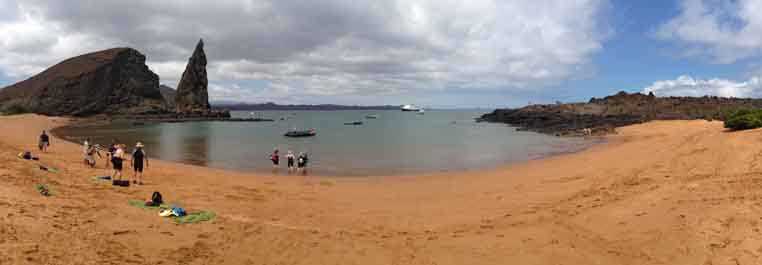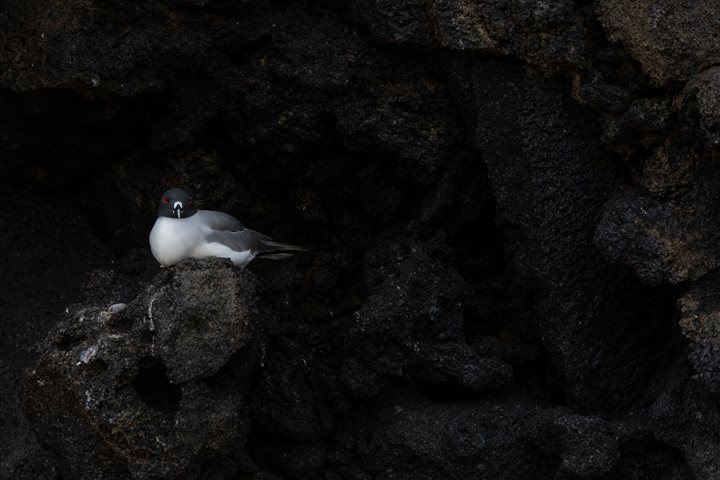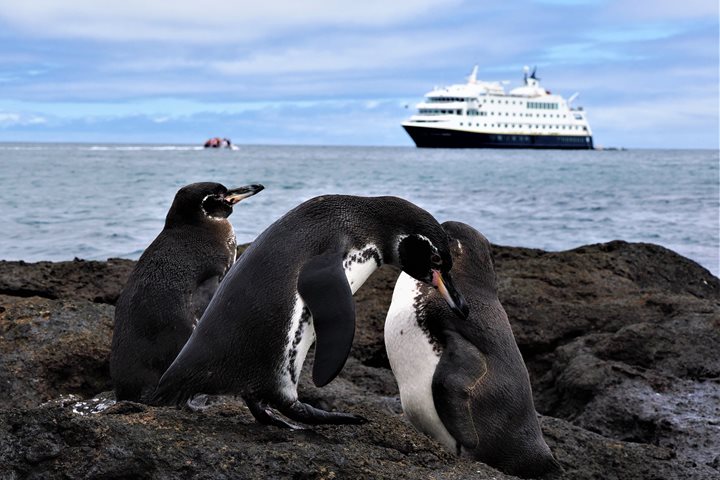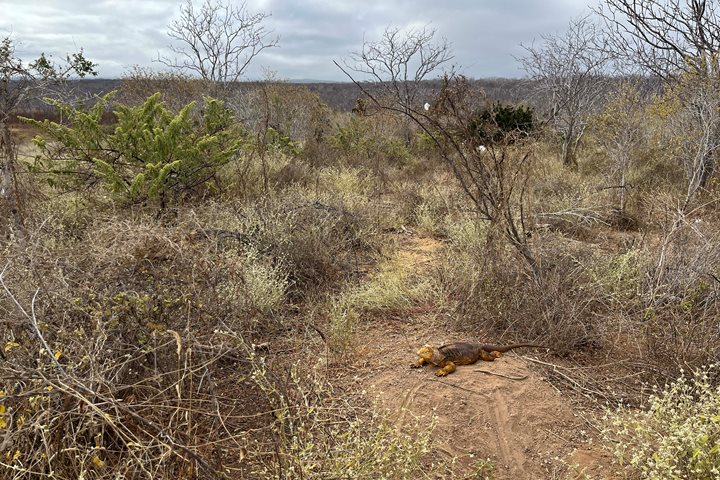Contrasts are all around us as we continue our expedition towards the western and youngest part of the archipelago. We get an early start as we come upon Bartolome Island and experience a deep orange glow silhouette of the sunrise behind this small satellite islet of Santiago Island. Subdued colors of grey and burnt sienna great us as we land and we proceed to climb to the top. After four hundred steps, a view of over twenty islands is upon us with Santa Cruz and Santiago islands being prominent. This small island is within the rain shadow of Santa Cruz, with just a few pioneer plants species holding on and starting light topsoil on this geological baby of an island. Mid-morning we land on a golden beach as the sun heads to its apex. The water temperature is brisk as we enter, and we are delighted with a plethora of aquatic species. Galapagos sea lions dart among us and various white-tipped reef sharks swim just a meter below us. Large Panamic sea cushion stars line the seabed with schools of razor surgeonfish grazing on algae upon the shallow reef. Pacific green sea turtles’ nests are observed as we return to the beach with Sally Lightfoot crabs feeding on algae upon the exposed reef at low tide.
Into the afternoon, our Captain John navigates the ship towards Chinese Hat Island, close to the southeastern coast of Santiago. To the ocean we go once again, snorkeling between Chinese Hat and Santiago islands. Diamond sting rays, gold and blue snappers, black-stripped salemas, and sergeant majors find us floating among them as we continue into the shallows. As we finish a completely satisfying snorkel approximately ten Galapagos penguins actively feeding on small schools of fish envelop our entire group. Penguins do fly, as we see these incredibly fast and agile swimmers pick off small fish, and within a few minutes they are gone, leaving us with smiles and a lack of descriptive words. After a quick dry off at the ship, we are out again for a Zodiac ride as the sun dips into the horizon over Isabela Island. A massive lava flow, just over a hundred years old, comes to the edge of Santiago. If it had continued a few hundred meters more it would have connected Chinese Hat to Santiago. Striated herons calmly walk close to the water’s edge stalking small fish. Marine iguanas are warming themselves upon the black basalt lava flow after their foray into the water to feed. In the distance a Galapagos Hawk hangs approximately 50 meters above the coast searching for unfortunate prey. As we return to our floating home, a few Galapagos penguins get out of the water and start to preen as a golden light falls, and the incredible contrasts move us once again.







